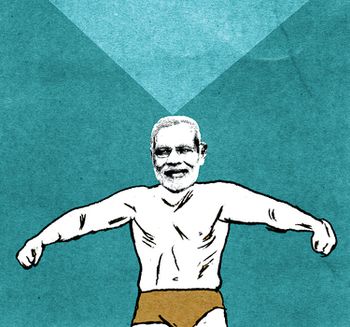Maurice Couve de Murville, the highly regarded foreign minister of France in the sixties, described international conferences as occasions for statesmen “to decide where, and when, to meet again”. That neatly sums up the outcome of the Modi-Xi summit in Wuhan. They met and embraced. They smiled at the photo-ops. They ensured the background was scenic. And, they agreed to meet again at some salubrious spot in India some time next year—by which time, of course, Modi will be history.
As for substance, for all the overblown rhetoric that issued from both sides before Wuhan, nothing of substance emerged. Not even a joint statement. The two sides issued separate statements to the press. The only thing that bound the two statements together was careful drafting to hint at the lack of a meeting of minds on all issues of discord, combined with a mutual desire to not to rock the boat at a time of escalating international tensions elsewhere. Well, that, of course, is all to the good, but hardly requires a hyped-up summit.
Attempts made before the Wuhan visit, to suggest that there was any comparison possible between Wuhan and Rajiv Gandhi’s 1988 breakthrough, have been belied. Essentially, this was because of the fundamental difference in the formulation and execution of foreign policy initiatives between then and now.
The Rajiv approach was institutional; Modi’s highly personalised. Preparations for the 1988 visit started immediately after Rajiv took office and stretched over four years before the summit took place. But, the plan to go to Beijing was never allowed to stand in the way of drawing the red lines. Indeed, two strong signals were sent to Deng Xiaoping: one, at Sumdorong Chu valley, that the India of the mid-eighties was no more the military pushover of the early sixties; the other was upgrading Arunachal Pradesh to full statehood against China’s claims to “South Tibet”.
At the same time, numerous formal and informal preparatory visits, several of them far from the public eye, ensured that when the two top leaders met, they would be able to put behind them the 1959-62 breakdown in Hindi-Chini bhai-bhai narrative. They set clear course for developing relations in every sphere, while instituting well-conceived mechanisms for sustained dialogue on differences that were real and possibly incapable of definitive resolution. Also, communication channels were opened to avoid armed conflicts, while conscientiously working towards taking full benefit of trade opportunities and people-to-people contact.
It is only because of such assiduous preparation—which unambiguously established what could be immediately achieved and what remitted to sustained future dialogue—that all it took was an eight-minute handshake between Deng and Rajiv in the Great Hall of the People for the world to know that the standoff of a quarter century had ended. Five years later came the agreement on ensuring peace on the border, that has provided the mechanisms to avoid skirmishes on the board escalating to surgical strikes. That is what statesmanship is about.
Showmanship is Modi fetching up in Wuhan without any clear, well-prepared prior understanding on what of substance is going to emerge beyond the spokespersons’ boastful talk of a “breakthrough” to match 1988. Wuhan was just business as usual. Perhaps we should be grateful even for that.
Why was not more achieved? Principally because foreign policy under Rajiv was not concentrated on one individual. All concerned were deeply involved. Experts, past as much as present, were mobilised. Every angle was carefully explored and every danger point red-signalled.
In the Modi-era, foreign policy has become personalised. There is neither careful preparation nor assiduous follow-up. Foreign policy is thus reduced to serial hugging.


